A well-packed kayak is one where you know where everything is, and nothing important gets left behind. So, as a veteran guide, I felt personally responsible when our group’s second snack bag failed to turn up halfway through a weeklong trip.
We searched every kayak, pulling the contents from the hatches until the boats lay empty and the beach resembled an outdoor gear swap. We stuck our heads through the large oval hatches to peer inside and probed the smaller round hatches with arms buried to our shoulders. Nothing. How did a brightly colored five-liter dry bag simply vanish? Given the bag’s precious contents, there was the inevitable speculation of foul play.
How to pack for kayak camping
Packing a kayak for multiday camping journeys is both an art and a science. There’s a deceptive amount of space in those slender hatches. Compare a compact touring kayak’s 150-ish liters of available storage to a typical 60-liter backpack or 70-liter pair of bicycle panniers, and that’s more than double the capacity you’d have trekking or touring on two wheels.
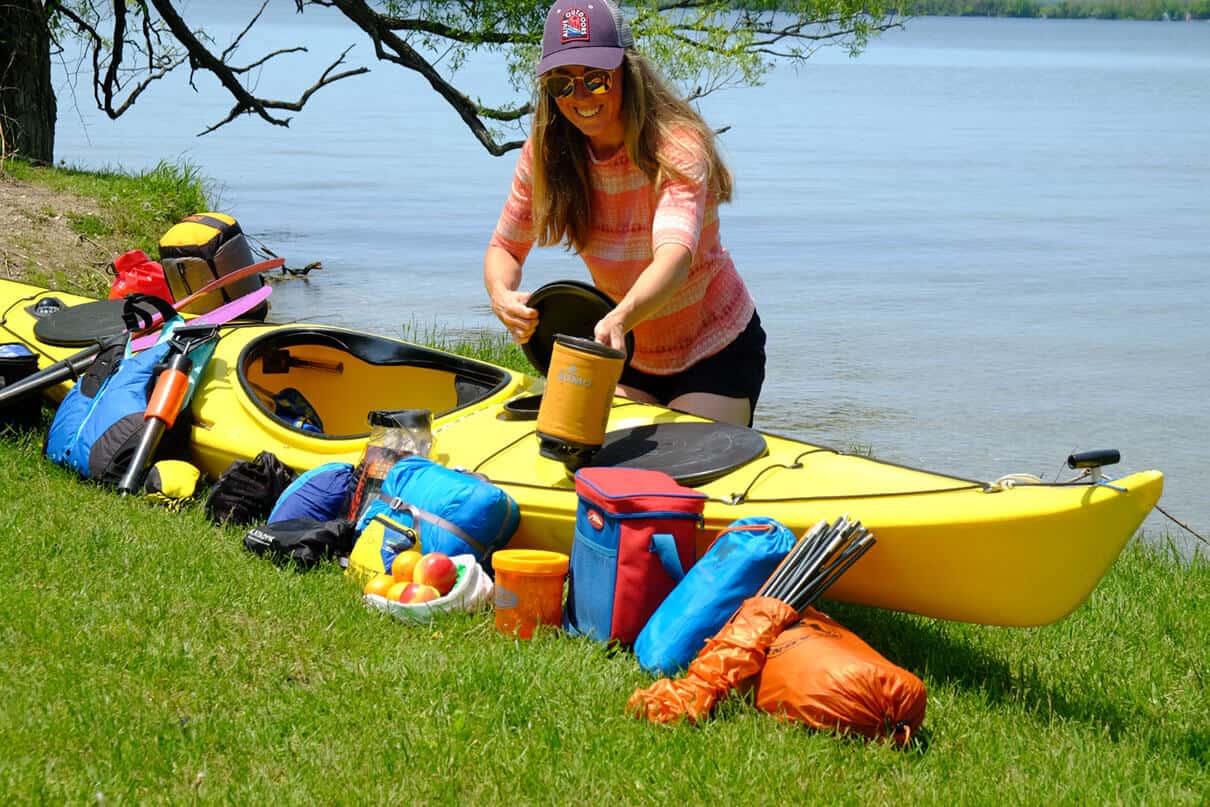
Optimizing your packing game means considering the size, shape and material of your gear bags, planning for efficient access, and understanding how weight distribution affects on-water performance. With a bit of practice and strategy, even smaller touring kayaks have ample space for all the essentials and a few luxuries (fresh food!) as well.
Follow these tips to ensure your favorite camp chair makes it into your hatch at the put-in, not back into your car.
Pro tip
Next time you’re at IKEA, pick up a couple of their heavy-duty reusable shopping totes for carting your constellation of small bags around the campsite. They’re spacious, water-repellent, weigh nothing, can be stuffed just about anywhere and cost just 99 cents.
Know your hatches
Familiarize yourself with the idiosyncrasies of your kayak’s storage areas. The size of the hatch opening may determine whether bulkier items, such as pot sets and sleeping bags, will fit in the bow or stern. Similarly, the depth of the hatch is a consideration for larger, non-compressible packages. Sometimes, these two factors are at odds with each other—the bow of a kayak is usually deeper than the stern, but often it is outfitted with a smaller hatch lid. Figuring out what gear best fits where can be a process of experimentation. Kayaks outfitted with under-stern skegs have the added complication of a molded-in skeg box to work around in the rear hatch.
Good things in small packages
When it comes to kayak touring, numerous smaller bags are much easier than a couple of large bags to fit like puzzle pieces into your hatches. Aim for bags in the five- to 15-liter range; tapered, kayak-specific dry bags are another great option for making efficient use of the narrow bow and stern ends.
Pro tip
Any water inside your hatches will pool at the lowest point (usually at the bulkhead, along the hull). Keep dry-priority items higher in the hatch, just under the deck. My favorite spot for my tent, sleeping pad and camp footwear is stuffed far up the bow, high and dry.
Waterproofing 101
On paper, kayak hatches are watertight. In practice, most hatches are nearly watertight. This means that over the course of a paddling day, especially a splashy one, a small amount of water may find its way into your sealed hatches. Pack anything that absolutely must stay dry—such as your sleeping bag, spare warm layers, camp clothes and sensitive electronics—in durable polyurethane-coated dry bags. It isn’t practical or necessary to dry bag everything in your hatch. Items like tarps, canned or sealed foods, fresh produce, cook sets and even tents are fine to pack in lightweight stuff sacks.
Balance your boat
Pro tip
Aim for neutral trim—sit in the loaded kayak in the water and ask a friend to check your profile.
One of the enduring pleasures of kayak camping is not obsessing over every ounce of weight. Unlike hiking with a heavy pack, a loaded kayak paddles nearly as effortlessly as an empty boat. It is important, however, to ensure you distribute the weight in a way that promotes balanced handling and performance. Pack the heaviest items in the bottom of the hatches, centered along the keel and closest to the cockpit. This keeps the center of gravity low and distributes weight evenly from side to side.
Front-to-back weight distribution—known as trim—is just as critical. A bow-heavy kayak tracks poorly and is tiring to paddle, not to mention wet in wavy conditions. Stern-heavy is similarly problematic.
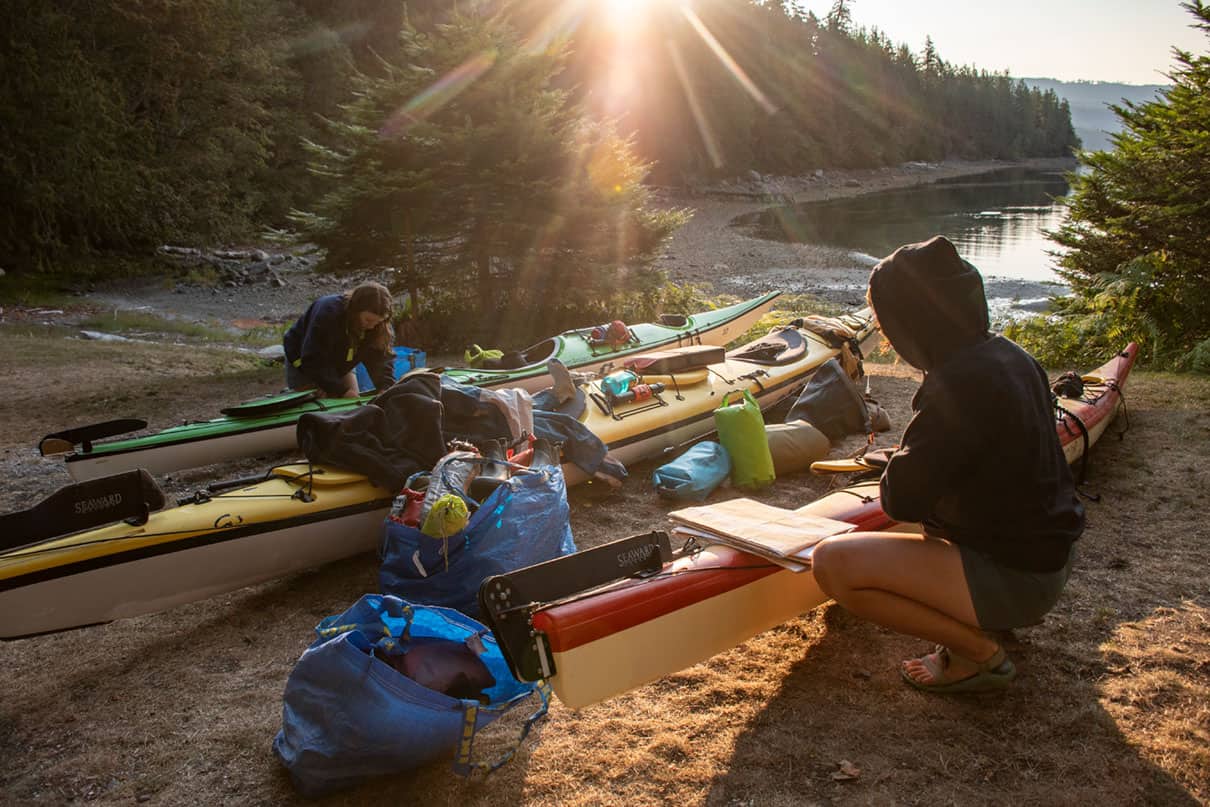
Pro tip
Make use of hard-to-reach spaces for storing food or gear items you won’t need until later in the trip. I pack a spare fuel bottle, a bathroom kit resupply, and a Tetra Pak of Pinot Grigio for the final night behind my skeg.
Pack for accessibility
Keep frequently used items and safety essentials close to hatch lids so they’re readily accessible. I like to pack the first aid kit, repair kit, sunscreen, water filter and tarp within easy reach in my day hatch, just behind the cockpit. A low-profile deck bag, or under-deck bag, is a great option for stashing smaller essentials in kayaks without a day hatch or built-in deck pod. Avoid extraneous deck clutter—strapping dry bags, camp chairs, frying pans and other riff-raff to your kayak isn’t just aesthetically disagreeable, it’s also a real safety hazard impeding rescues and reentry should you capsize.
Consistency, not confusion
Learn what works for your kayak, then stick with the same packing routine for the whole trip. On group trips where shared essentials and meals are distributed among all the kayaks, I jot down a group gear and food inventory for each boat in a waterproof notepad at the launch. In the chaos of the first pack-out, this minimizes confusion later and is a great way to double-check nothing is overlooked.
We didn’t find the missing snack bag until after the trip had ended. Back at the outfitters, following a long trailer shuttle, it appeared as if by magic in a front hatch. Two-and-a-half hours bumping down the Trans-Canada revealed what days of diligent searches had not—a red dry bag stashed within a kayak of precisely the same color. Wedged at the very tip of the bow, it had been perfectly camouflaged and beyond our reach.
Kayak camping packing checklist
Whether you’re going on your first kayak trip or your hundredth, it’s always best to refer to a checklist so you don’t forget any essentials. Check off items as you pack, but bring only what suits your trip, conditions and style. Not every item is essential for every paddler.
Kayaking essentials
- Kayak
- Paddle
- Extra paddle
- PFD (Personal Flotation Device)
- Paddle float
- Sprayskirt
- Cockpit cover
- Emergency throw line (in throw bag)
- Bailer or bilge pump
- Large sponge
- Weather/VHF radio
- Signaling devices (whistle, mirror, flares)
- Waterproof maps/charts + compass
- Dry bags (various sizes)
Safety & navigation
- Waterproof matches/lighter/firestarter
- Cellphone (in waterproof case)
- First-aid kit
- Knife
- Watch
- Kayak lights (if paddling after dark)
- Sunscreen
- Lip balm
- Water bottles
- Water filter/treatment
- Electrolyte mix
- Bear spray
- Satellite communicator
Camp basics
- Tent
- Sleeping bag
- Sleeping pad
- Stove + fuel
- Meals + snacks
- Cookset + utensils
- Dishes + cups
- Insect repellent
- Headlamp or flashlight + extra batteries
- Trip itinerary (copy in car + with friend)
- Camp permits (if required)
Clothing
- Drysuit or paddling top
- Shorts or zip-off pants
- Wicking base layers
- Insulating layer (jacket, vest, pants)
- Rain jacket + pants
- Socks
- Paddling footwear
- Camp shoes
- Sun hat
- Sunglasses
- Neck gaiter or bandana
- Warm hat
- Swimsuit
Personal items
- Toilet paper + trowel
- Toiletries
- Hand sanitizer
- Camera
- Book
- Binoculars
- Credit card + small cash
Repair & tools
- Duct tape
- Kayak repair kit
- Tent pole splint
- Cord
- Sewing kit
- Multi-tool
Virginia Marshall is a 20-year veteran guide on Lake Superior’s northern shore, and a former editor of Adventure Kayak magazine.
Minimal-ish. | Feature photo: Cody Shimizu


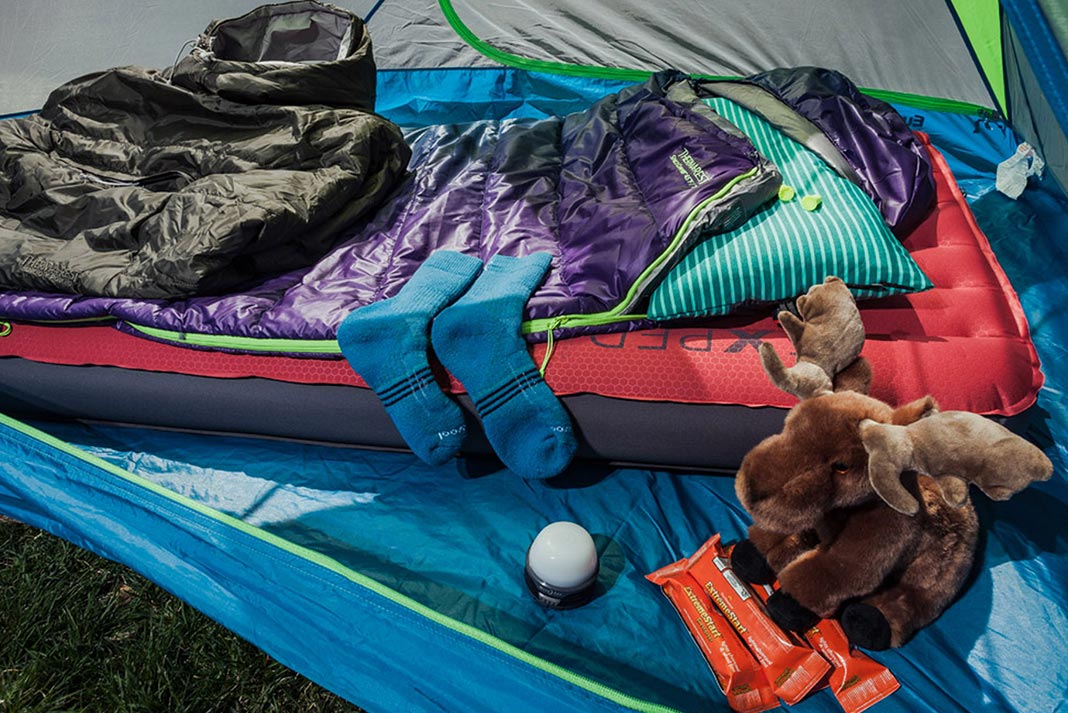
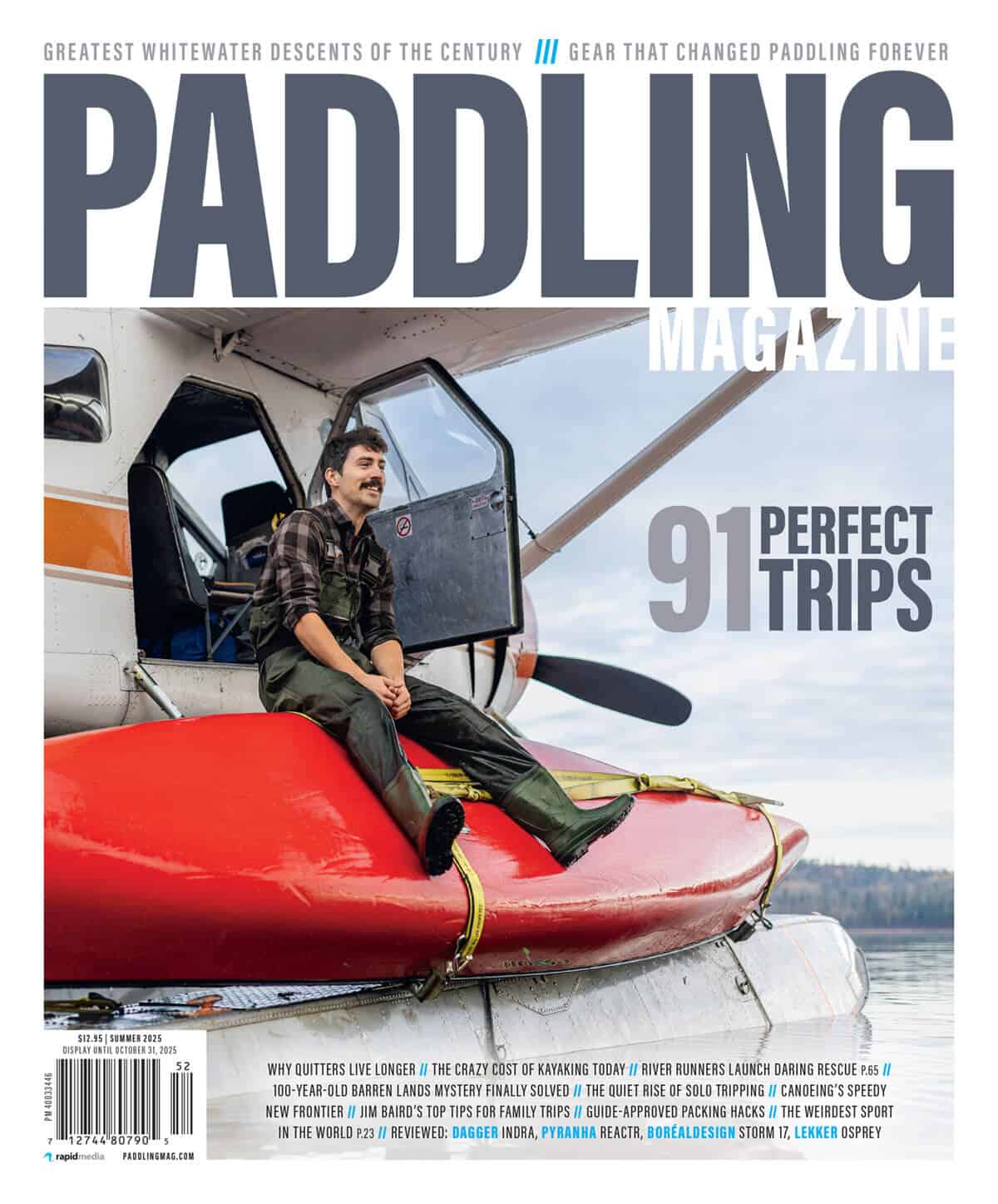 This article was published in Issue 74 of Paddling Magazine.
This article was published in Issue 74 of Paddling Magazine. 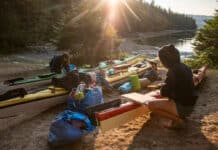

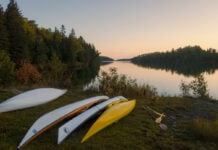
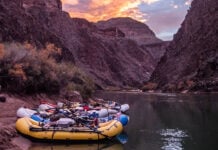


One of the best trips ever for me was the Rideau Canal. We were beyond-glamping… paddled from hotel to hotel, all on the water way. Real bed each night, hot shower, gourmet meals, beautiful scenery and locks! It was amazing.
One tip given me early on in my kayak camping was to tie a length of rope on items that will go far up in the bow hatch. That makes them easy to retrieve – and would avoid the problem of the same-colored sneak bag!
Two approximately 18“ x half inch by 3 inch slats which will pack behind your cockpit seat are perfect for sticking underneath your hull when pulling your boat out on rocks. Especially if you have a fiberglass boat.